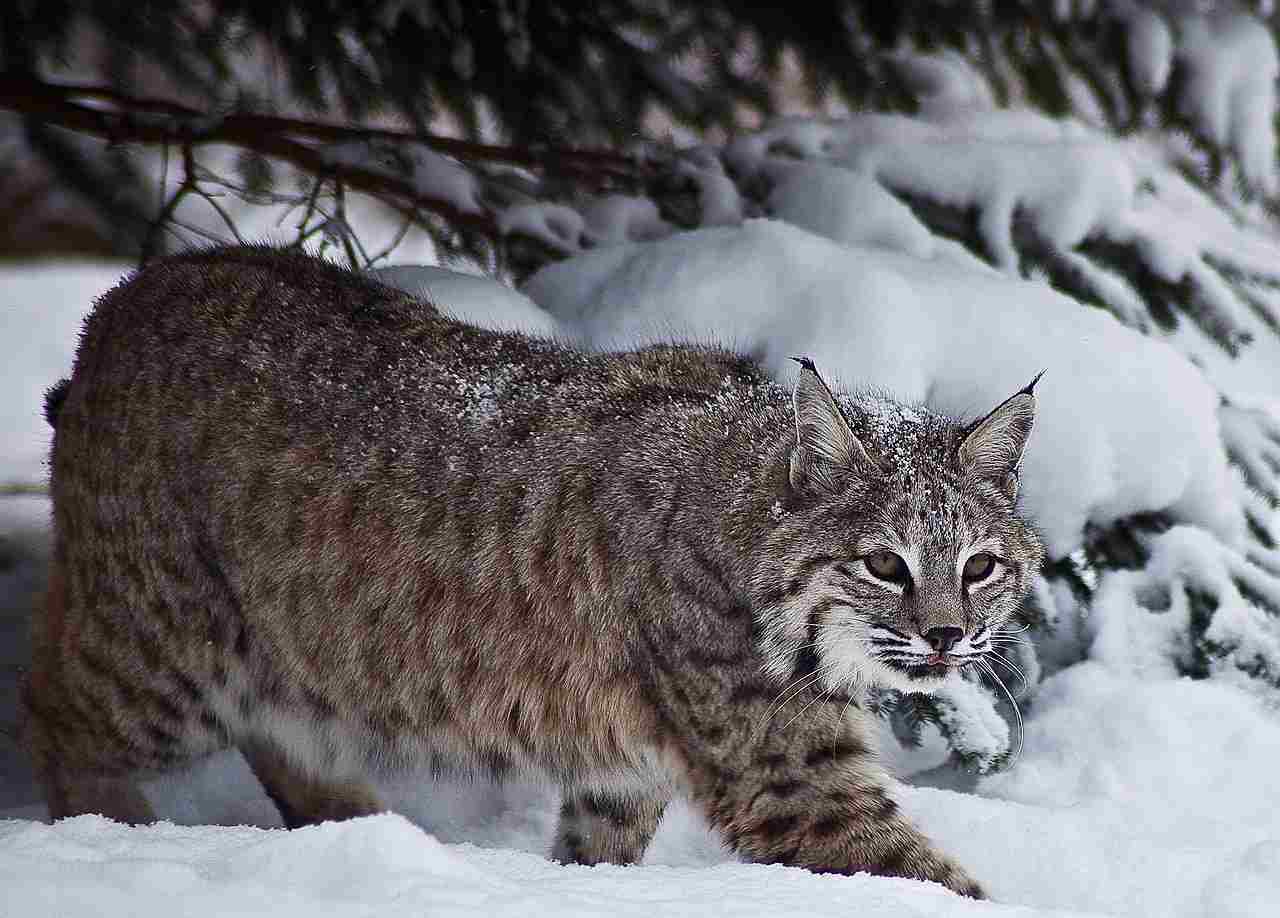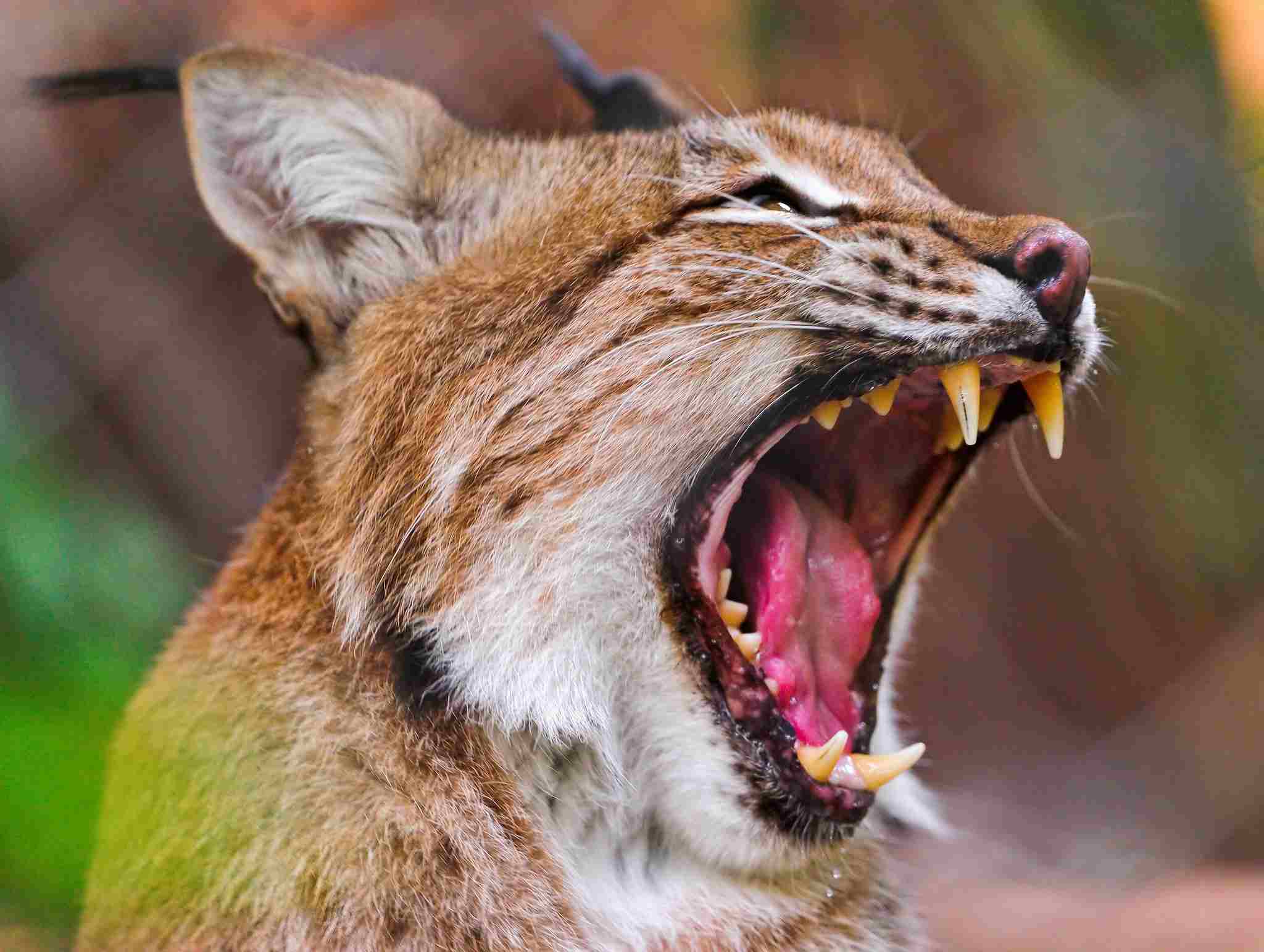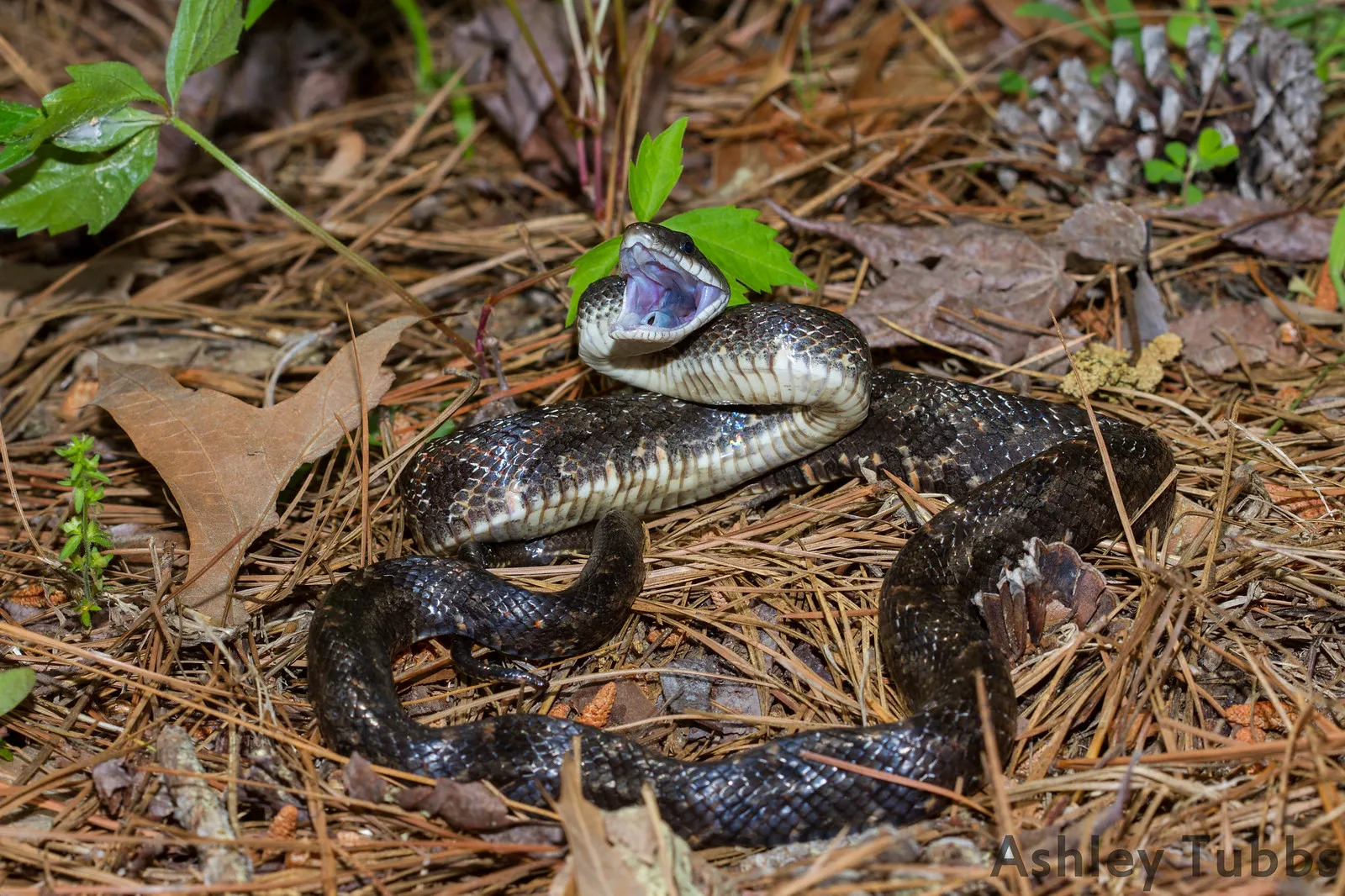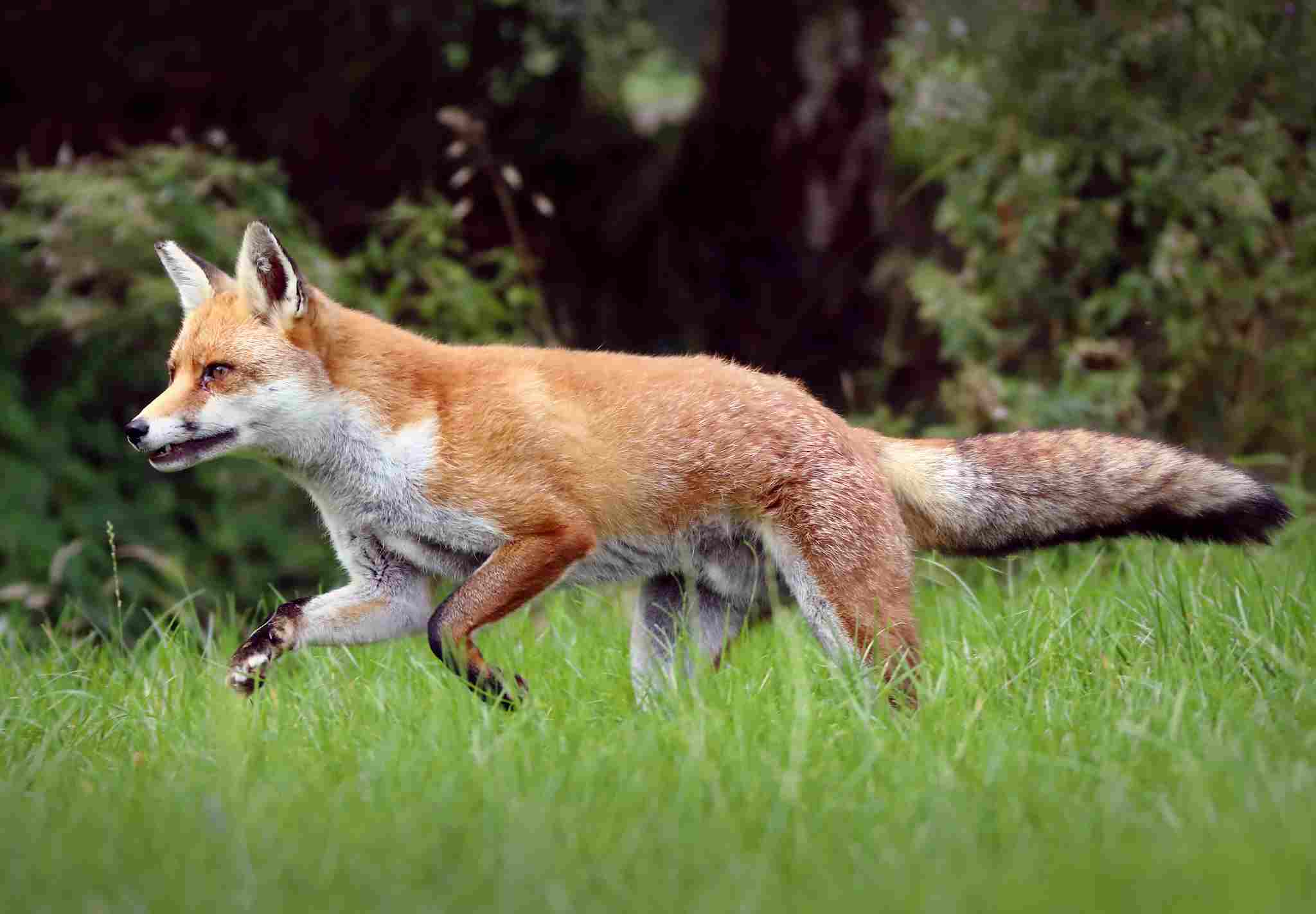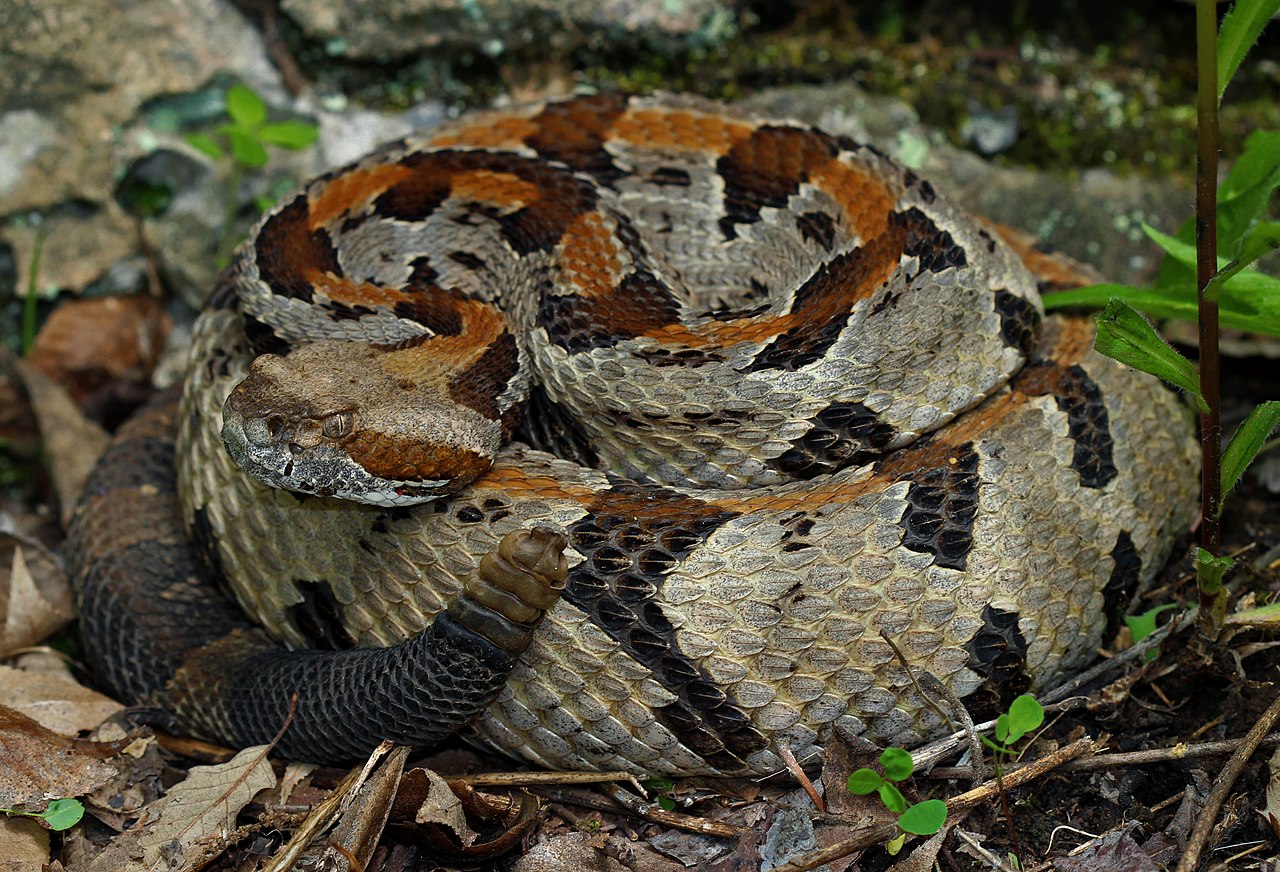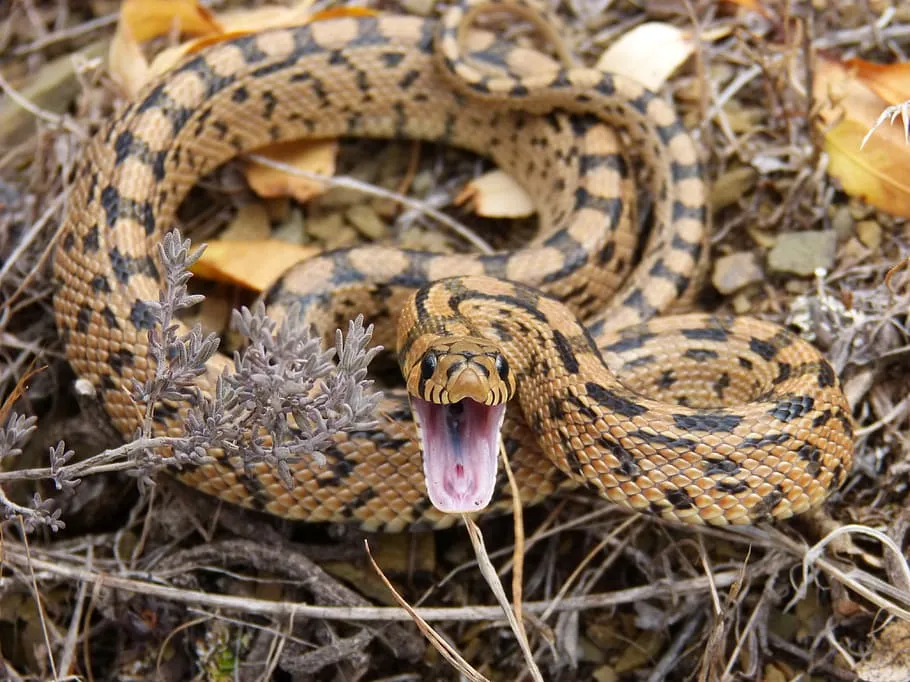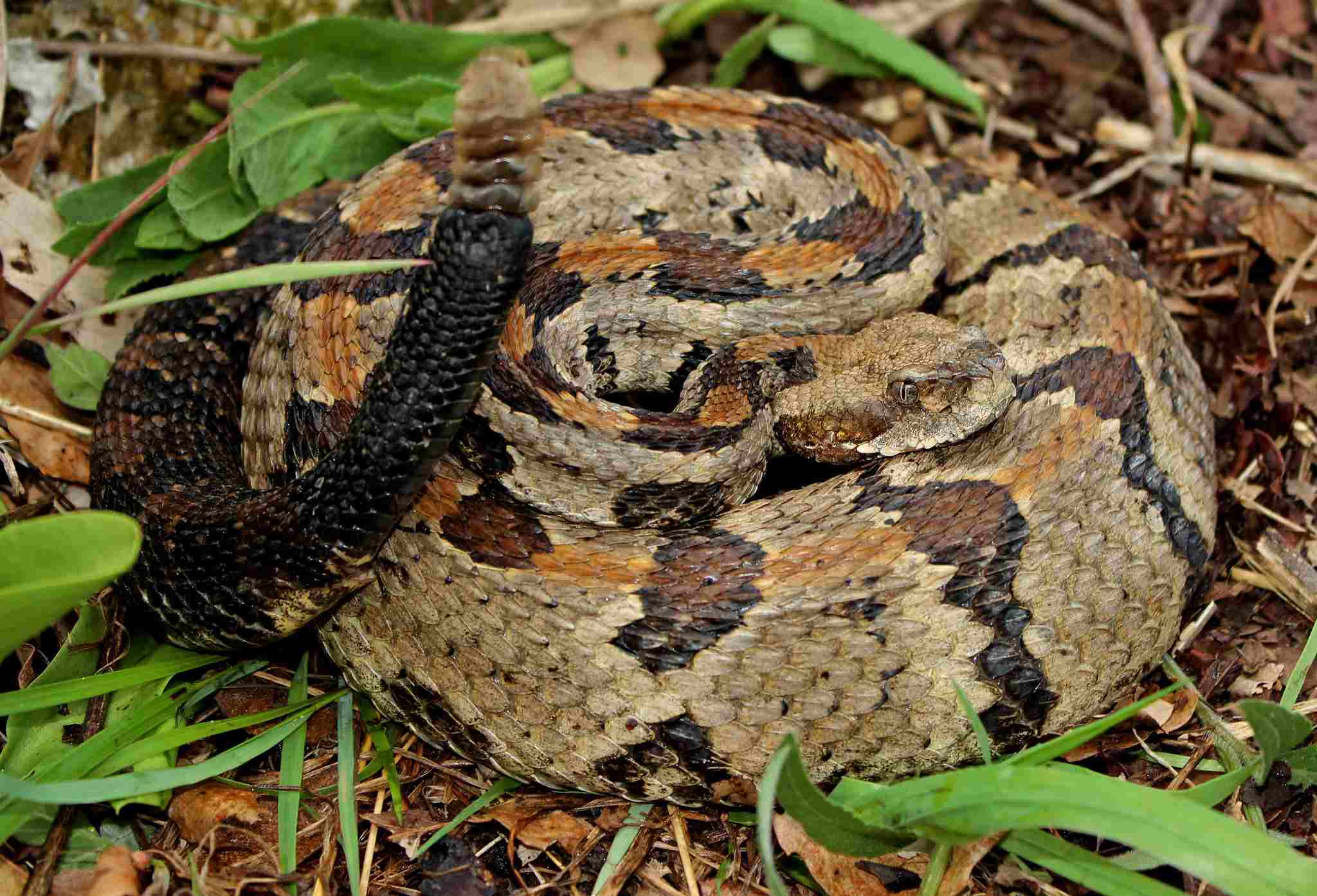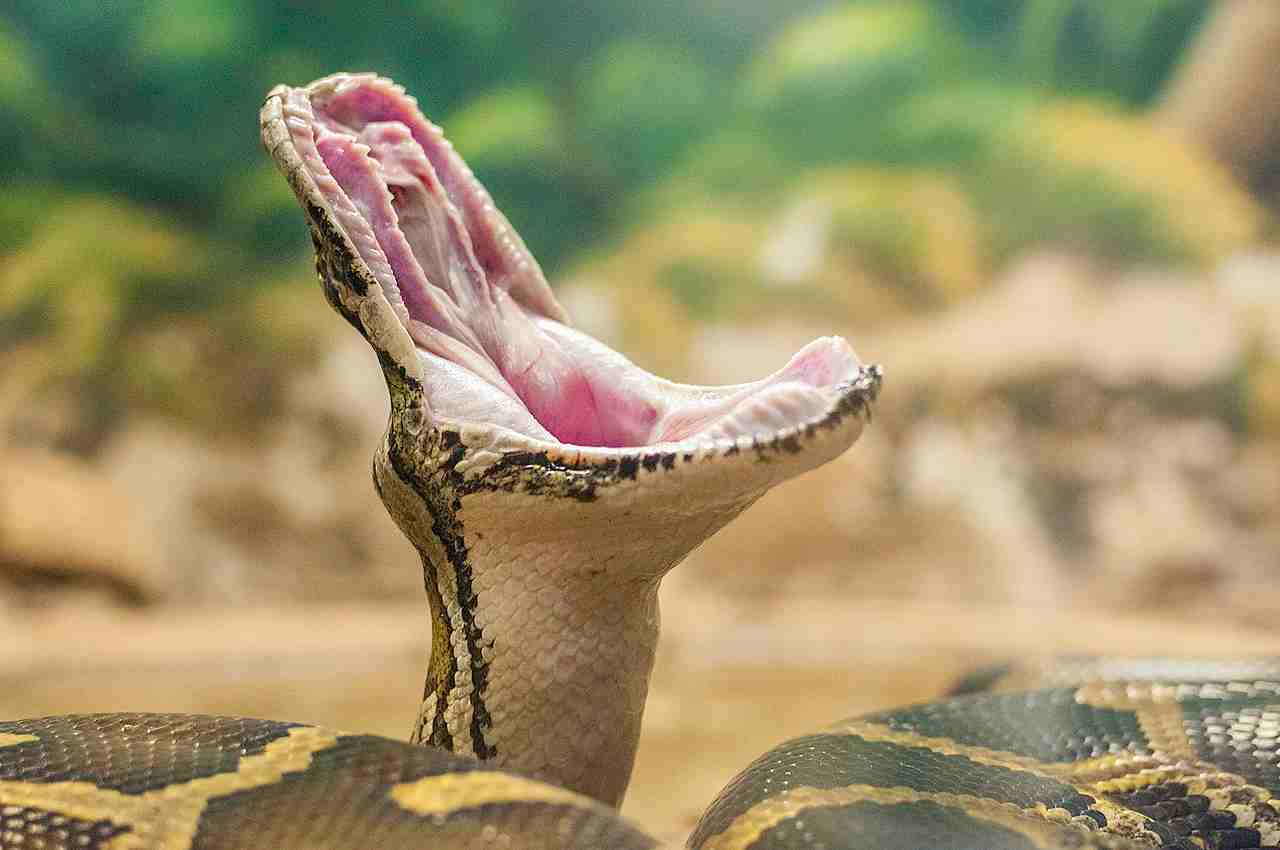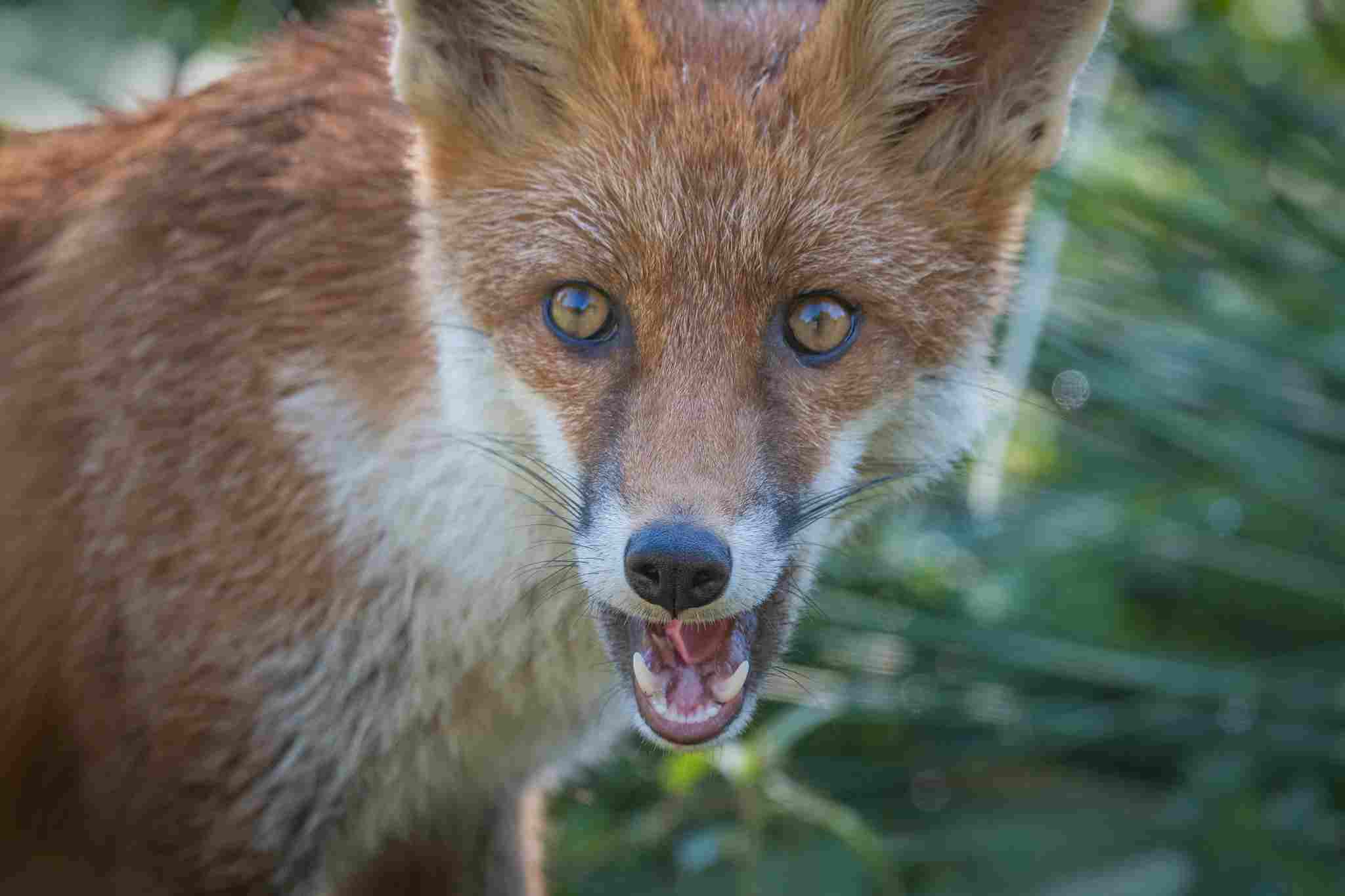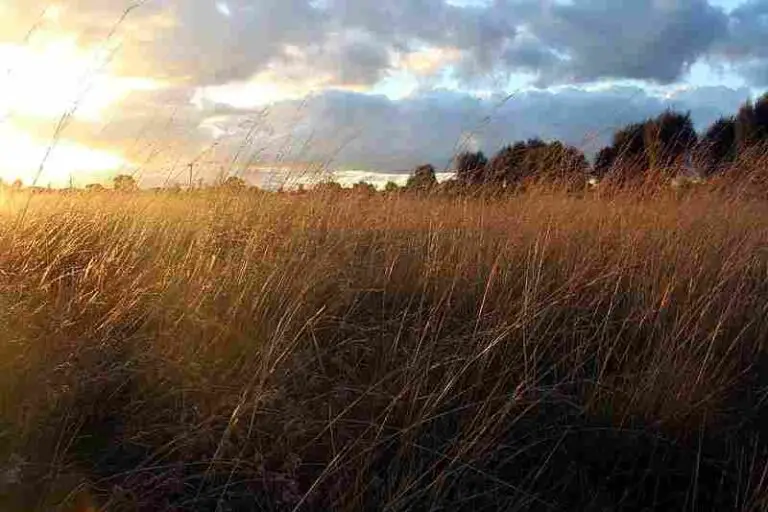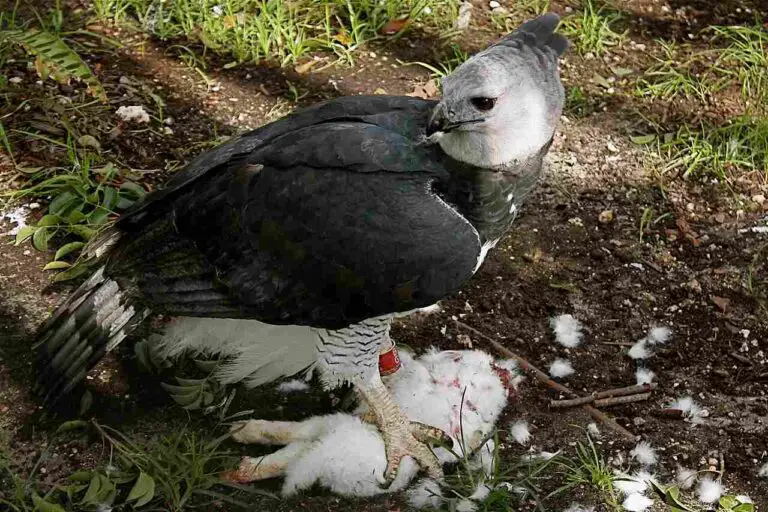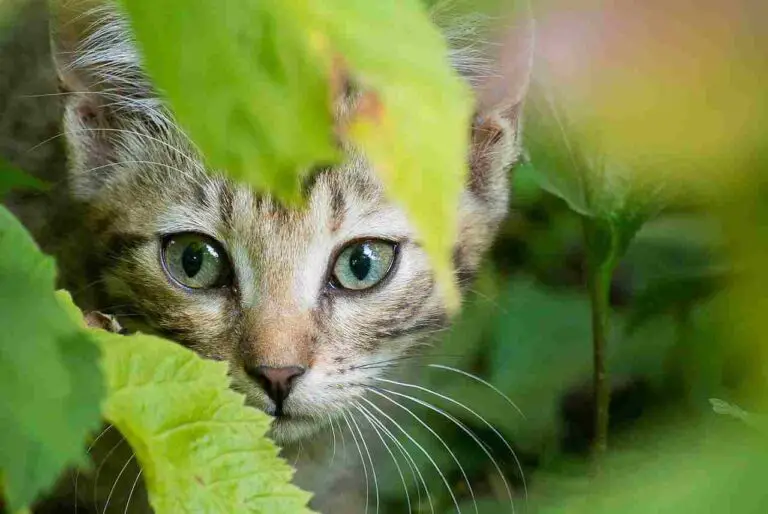11+ Predators In Illinois And Their Characteristics Discussed
Examples of predators in Illinois include bobcats, foxes, raccoons, and cougars. These animals vary in size and behavior, from the small but aggressive long-tailed weasel to the large and occasionally seen black bear. Illinois is also home to several venomous species, like the copperhead snake, timber rattlesnake, black widow spider, and striped-back scorpion. Despite their differences, these predators play crucial roles in maintaining ecological balance by controlling populations of smaller animals and insects.
1. Bobcat
The bobcat (Lynx rufus) is a medium-sized wild cat found throughout Illinois, known for its distinctive tufted ears and short, bobbed tail. It is a highly adaptable predator, capable of thriving in a variety of habitats, including forests, swamps, deserts, and even suburban areas. Bobcats are primarily nocturnal, hunting at night and resting during the day. Their diet is diverse, ranging from small mammals like rabbits and squirrels to birds, reptiles, and even small deer. As stealthy hunters, they rely on their acute senses of sight and hearing to track prey.
Despite their wide distribution, bobcats are generally elusive and rarely seen by humans. In Illinois, they were once considered a species of concern due to habitat loss and overhunting, but their population has rebounded thanks to conservation efforts and legal protections. These cats are solitary by nature, with distinct territories that they mark using scent. Their adaptability and stealth make them a unique and fascinating component of Illinois’s diverse ecosystem, playing an important role in controlling populations of smaller mammals.
2. Fox
Illinois is home to two species of fox: the red fox (Vulpes vulpes) and the gray fox (Urocyon cinereoargenteus). Both species are known for their cunning nature and agility. The red fox, with its iconic reddish-orange fur and bushy tail, is the most widely distributed, often found in rural, suburban, and urban areas. It is a versatile predator, consuming a diet that includes small mammals, birds, insects, and fruits. Red foxes are also known for their intelligence and adaptability, often seen near human habitations, where they scavenge for food.
The gray fox, distinguished by its grizzled gray coat and black-tipped tail, is more likely to be found in wooded areas, where it can climb trees to escape predators and hunt. Gray foxes tend to be more secretive than their red counterparts, preferring dense forest cover. Both species of fox are primarily nocturnal and play an essential role in maintaining the ecological balance by controlling rodent populations. Although they sometimes come into conflict with humans, they are generally non-aggressive and avoid direct contact.
3. Raccoon
Raccoons (Procyon lotor) are one of Illinois’s most recognizable and adaptable mammals. With their distinctive black “mask” and ringed tail, raccoons are found in a variety of habitats, including forests, wetlands, and urban environments. These opportunistic omnivores have a diet that encompasses a wide range of foods, from fruits and nuts to small animals and human refuse. Their dexterous front paws allow them to open containers, manipulate objects, and even unlock simple mechanisms, making them particularly adept at foraging in urban settings.
Raccoons are primarily nocturnal, venturing out at night to forage, and are known for their resourcefulness and intelligence. They often live in family groups and communicate using a range of vocalizations. While raccoons play a valuable role in controlling insect and rodent populations, they can also be a nuisance to homeowners due to their tendency to raid garbage cans and cause property damage. Despite this, they are a beloved part of the Illinois wildlife scene, known for their playful and curious behavior.
4. Weasel
Weasels, particularly the long-tailed weasel (Mustela frenata), are small but fierce predators found in Illinois. Characterized by their elongated bodies, short legs, and long tails, they are adept at hunting in a variety of environments, from forests and grasslands to farmlands. The long-tailed weasel has a high metabolism, requiring it to hunt frequently for small mammals like mice, voles, and shrews. Its slender body allows it to enter burrows and other tight spaces in pursuit of prey, making it a highly efficient predator.
These agile hunters are mostly active during the night and at dusk, though they can be seen during the day. Weasels are solitary by nature, coming together only during mating season. While their presence is generally beneficial in terms of controlling rodent populations, they can pose a threat to poultry and other small livestock, which can lead to conflicts with farmers. Despite their small size, weasels are bold and aggressive when hunting, showcasing their remarkable agility and predatory prowess.
5. Cougar
Cougars (Puma concolor), also known as mountain lions or pumas, are large predators that occasionally roam into Illinois, although they do not have a permanent breeding population in the state. These big cats are recognized for their tawny coats, long tails, and powerful build. Cougars are apex predators, capable of taking down large prey like deer, but they also hunt smaller mammals and birds. They are primarily solitary animals, with vast territories that can span hundreds of square miles.
In Illinois, cougar sightings are rare and often generate significant public interest and concern. The sporadic presence of cougars in the state is typically attributed to dispersal from established populations in western states. Due to their elusive nature and low numbers, cougars are generally not considered a threat to humans, but encounters can cause anxiety. Conservation efforts focus on monitoring and understanding these predators to ensure both their protection and public safety. Despite their transient presence, cougars symbolize the potential for large predators to return to areas where they were once extirpated.
6. Black Bear
Black bears (Ursus americanus) are large mammals occasionally found in Illinois, though they do not maintain a stable population in the state. These bears are known for their thick black fur, stocky build, and keen sense of smell. Black bears are omnivores, consuming a diet that includes fruits, nuts, insects, small mammals, and, on rare occasions, larger prey. They are also opportunistic feeders, which can lead them to human-inhabited areas in search of food.
In Illinois, black bear sightings are sporadic and often involve wandering individuals from neighboring states. While black bears generally avoid human contact, they can be dangerous if threatened or if they become accustomed to human food sources. Efforts to manage black bear interactions in Illinois focus on educating the public about coexistence and minimizing attractants like unsecured garbage or bird feeders. Black bears play a significant ecological role in the regions where they are established, and their occasional presence in Illinois is a reminder of the state’s potential to support diverse wildlife.
7. Coyote
Coyotes (Canis latrans) are one of the most adaptable and widespread predators in Illinois. Known for their distinctive yipping howls, coyotes thrive in a variety of habitats, from forests and grasslands to urban areas. These versatile carnivores have a diverse diet that includes small mammals, birds, insects, and even fruit. They are opportunistic hunters and scavengers, capable of adjusting their behavior to suit their environment.
In Illinois, coyotes are common and play an essential role in controlling rodent populations. However, their presence in urban areas has led to conflicts with humans, particularly when they prey on pets or livestock. Despite these issues, coyotes generally avoid direct interaction with people and are more active during dusk and night. Conservation efforts focus on promoting coexistence and educating the public on how to reduce conflicts with these intelligent and resourceful predators. Coyotes are a vital component of Illinois’s ecosystem, helping to maintain ecological balance.
8. River Otter
The North American river otter (Lontra canadensis) is a playful and energetic predator found in Illinois’s rivers and wetlands. Known for their sleek bodies, webbed feet, and long tails, river otters are excellent swimmers and are well-adapted to aquatic environments. They are primarily carnivorous, feeding on fish, crustaceans, and small amphibians. River otters are social animals, often living in family groups and engaging in playful behavior that includes sliding down riverbanks and wrestling with one another.
In Illinois, river otters were once at risk due to habitat loss and over-trapping, but conservation efforts and reintroduction programs have helped restore their populations. They are now a common sight in many of the state’s waterways, where they play a crucial role in maintaining the health of aquatic ecosystems. River otters are generally active during dusk and dawn, and their presence is often an indicator of a healthy river environment. They are beloved for their playful antics and are considered a positive sign of ecological recovery in Illinois.
9. Copperhead Snake
The copperhead snake (Agkistrodon contortrix) is a venomous pit viper found in certain parts of Illinois. Named for its copper-colored head, this snake has a distinctive pattern of brown and tan bands along its body. Copperheads are generally found in wooded areas and rocky outcrops, where they can blend in with their surroundings. They are ambush predators, lying in wait for small mammals, birds, or amphibians to come within striking distance.
While copperhead bites can be painful and cause significant tissue damage, they are rarely fatal to humans. In Illinois, these snakes are not particularly aggressive and will generally avoid human contact if possible. However, their camouflage makes them difficult to spot, leading to accidental encounters. Conservation efforts focus on educating the public about copperhead snakes and encouraging people to respect their role in the ecosystem. Despite their venomous nature, copperheads are essential for controlling small mammal populations, contributing to the balance of Illinois’s natural habitats.
10. Timber Rattlesnake
The timber rattlesnake (Crotalus horridus) is another venomous pit viper found in Illinois, primarily in the southern regions of the state. Known for its distinctive rattle at the end of its tail, this snake has a pattern of dark bands along its body, ranging from brown to black. Timber rattlesnakes are generally found in wooded areas, particularly in hilly or rocky terrains. They are ambush predators, relying on their venom to subdue small mammals like mice and squirrels.
Although timber rattlesnakes are venomous, they are generally non-aggressive and will avoid human contact if given the chance. They use their rattle as a warning signal when threatened, allowing potential predators or humans to back away. In Illinois, timber rattlesnakes are considered a species of concern due to habitat loss and human encroachment. Conservation efforts aim to protect their habitats and educate the public on avoiding negative encounters with these snakes. Despite their fearsome reputation, timber rattlesnakes play a critical role in controlling rodent populations and maintaining ecological balance.
11. Black Widow Spider
The black widow spider (Latrodectus mactans) is a venomous arachnid found in Illinois, typically in dark, sheltered areas like woodpiles, sheds, and basements. These spiders are easily recognized by their shiny black bodies and distinctive red hourglass markings on the underside of their abdomens. Black widow spiders are generally shy and will avoid humans, but they can deliver a potent venomous bite if provoked. Their diet consists of insects and other small arthropods, which they capture in their irregularly shaped webs.
Black widow spider bites can cause severe pain and muscle cramps but are rarely fatal to humans, especially with prompt medical treatment. In Illinois, black widow spiders are not common, and encounters are relatively rare. However, their presence can cause concern due to their venomous nature. Conservation efforts focus on educating the public about black widow spiders and encouraging safety precautions when dealing with areas where they might reside. Despite their reputation, these spiders play an important role in controlling insect populations, contributing to the ecological balance in Illinois.
12. Striped-Back Scorpion
The striped-back scorpion (Centruroides vittatus) is a small but venomous scorpion found in southern Illinois. Characterized by its tan body and distinctive dark stripes running down its back, this scorpion is typically found in rocky or wooded areas. Striped-back scorpions are nocturnal, emerging at night to hunt for insects and other small arthropods. They use their venomous sting to subdue their prey, injecting a toxin that paralyzes and kills their target.
In Illinois, striped-back scorpions are relatively rare and are more common in the southern regions of the state. Their sting is painful but generally not dangerous to humans, similar to a bee sting, though allergic reactions can occur in some individuals. Conservation efforts for the striped-back scorpion focus on protecting its natural habitat and promoting awareness of its presence. These scorpions contribute to controlling insect populations and are a unique part of Illinois’s diverse wildlife. Despite their venomous nature, they are not typically aggressive and will avoid human contact if possible.
*Summary
-
Bobcat
-
Medium-sized wild cat with tufted ears and short, bobbed tail.
-
Nocturnal hunter; diet includes small mammals, birds, reptiles, and small deer.
-
Solitary and elusive; population rebounded due to conservation efforts.
-
-
Fox
-
Illinois has red fox and gray fox.
-
Red fox: versatile, commonly seen in urban and rural areas.
-
Gray fox: prefers wooded areas, climbs trees, and is more secretive.
-
-
Raccoon
-
Distinctive with black “mask” and ringed tail.
-
Omnivorous; eats a wide range of food.
-
Adaptable to urban environments; known for intelligence and dexterity.
-
-
Weasel
-
Long-tailed weasel found in various environments.
-
Aggressive hunter of small mammals; solitary by nature.
-
Controls rodent populations; can pose a threat to poultry.
-
-
Cougar
-
Large predator, occasionally seen in Illinois.
-
Apex predator; diet includes deer and smaller animals.
-
Elusive and solitary; generally not a threat to humans.
-
-
Black Bear
-
Large omnivore, occasionally in Illinois.
-
Opportunistic feeder; diet includes fruits, nuts, insects, and small mammals.
-
Sporadic sightings; conservation efforts focus on coexistence and education.
-
-
Coyote
-
Adaptable and widespread predator.
-
Diet includes small mammals, birds, and insects.
-
Conflicts with humans due to presence in urban areas; vital for ecological balance.
-
-
River Otter
-
Playful aquatic predator; well-adapted to rivers and wetlands.
-
Carnivorous; feeds on fish, crustaceans, and small amphibians.
-
Recovered population due to conservation efforts.
-
-
Copperhead Snake
-
Venomous pit viper; found in wooded areas.
-
Distinctive copper-colored head and brown/tan band pattern.
-
Generally non-aggressive; plays role in controlling small mammal populations.
-
-
Timber Rattlesnake
-
Venomous snake with a distinctive rattle.
-
Found in wooded and rocky terrains; controls rodent populations.
-
Conservation efforts due to species of concern; non-aggressive but venomous.
-
-
Black Widow Spider
-
Venomous spider; found in dark, sheltered areas.
-
Recognized by black body and red hourglass marking.
-
Bites can be severe but rarely fatal; controls insect populations.
-
-
Striped-Back Scorpion
-
Small, venomous scorpion; found in southern Illinois.
-
Distinctive tan body with dark stripes.
-
Painful sting; not usually aggressive; helps control insect populations.
-
| Predator | Description |
| Bobcat |
Medium-sized cat with tufted ears; hunts small mammals; nocturnal and solitary; rebounded due to conservation.
|
| Fox |
Red and gray fox; adaptable; red found in urban/rural areas; gray prefers woods; diet includes small mammals and birds.
|
| Raccoon |
Omnivorous with distinctive “mask”; adaptable to urban settings; known for intelligence and dexterous paws.
|
| Weasel |
Long-tailed; aggressive hunter of small mammals; controls rodent populations; can be a threat to poultry.
|
| Cougar |
Large apex predator; occasionally seen in Illinois; elusive; diet includes deer and smaller mammals.
|
| Black Bear |
Large omnivore; occasional in Illinois; opportunistic feeder; conservation focuses on coexistence and education.
|
| Coyote |
Adaptable and widespread; diet includes small mammals, birds, and insects; conflicts with humans in urban areas.
|
| River Otter |
Playful aquatic predator; recovered due to conservation; diet includes fish, crustaceans, and amphibians.
|
| Copperhead Snake |
Venomous pit viper; found in wooded areas; generally non-aggressive; controls small mammal populations.
|
| Timber Rattlesnake |
Venomous with distinctive rattle; found in wooded/rocky areas; controls rodent populations; conservation concern.
|
| Black Widow Spider |
Venomous spider; found in dark, sheltered areas; distinctive red hourglass marking; bites severe but rarely fatal.
|
| Striped-Back Scorpion |
Small, venomous scorpion in southern Illinois; tan body with dark stripes; painful sting but not aggressive.
|

